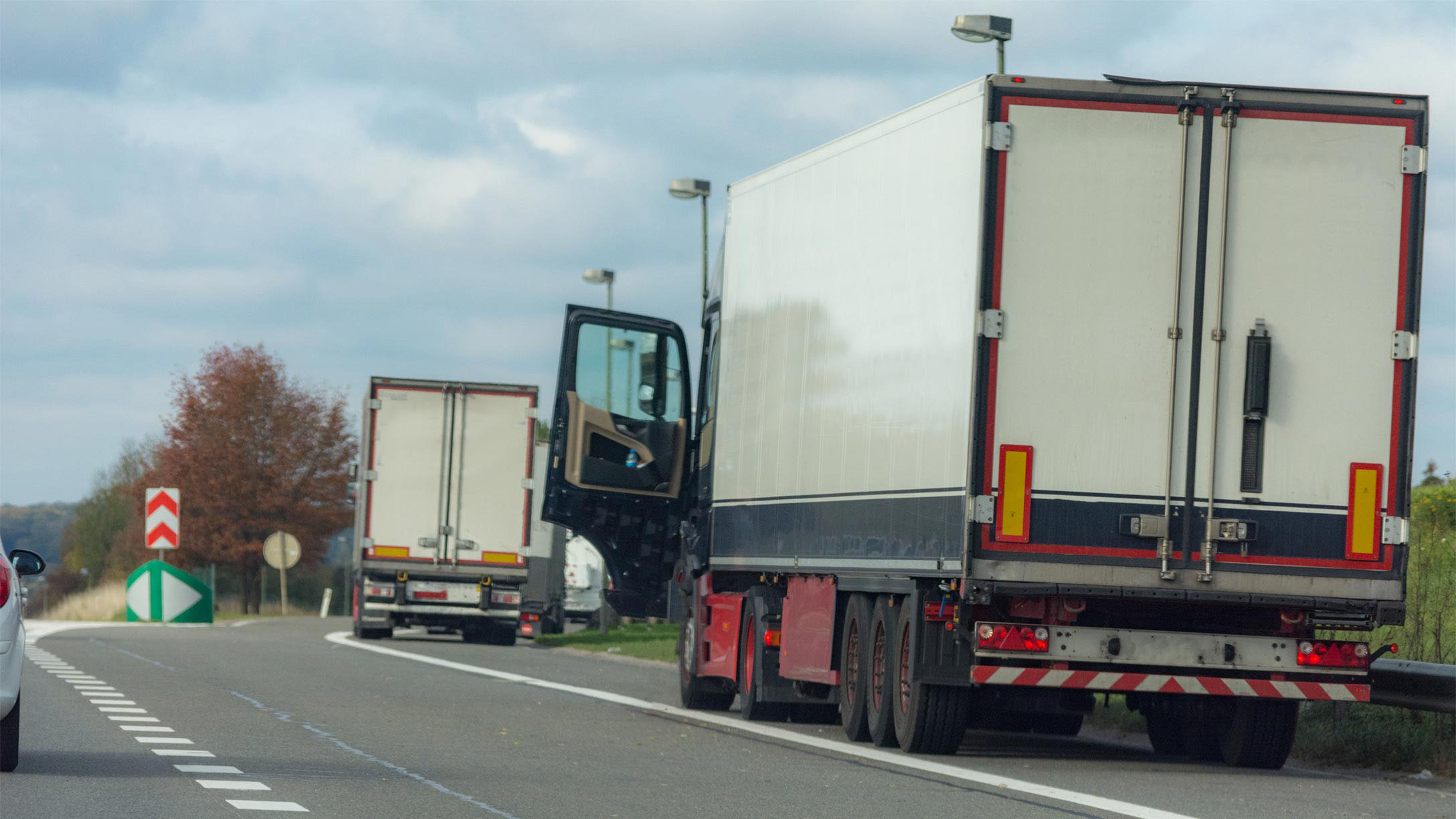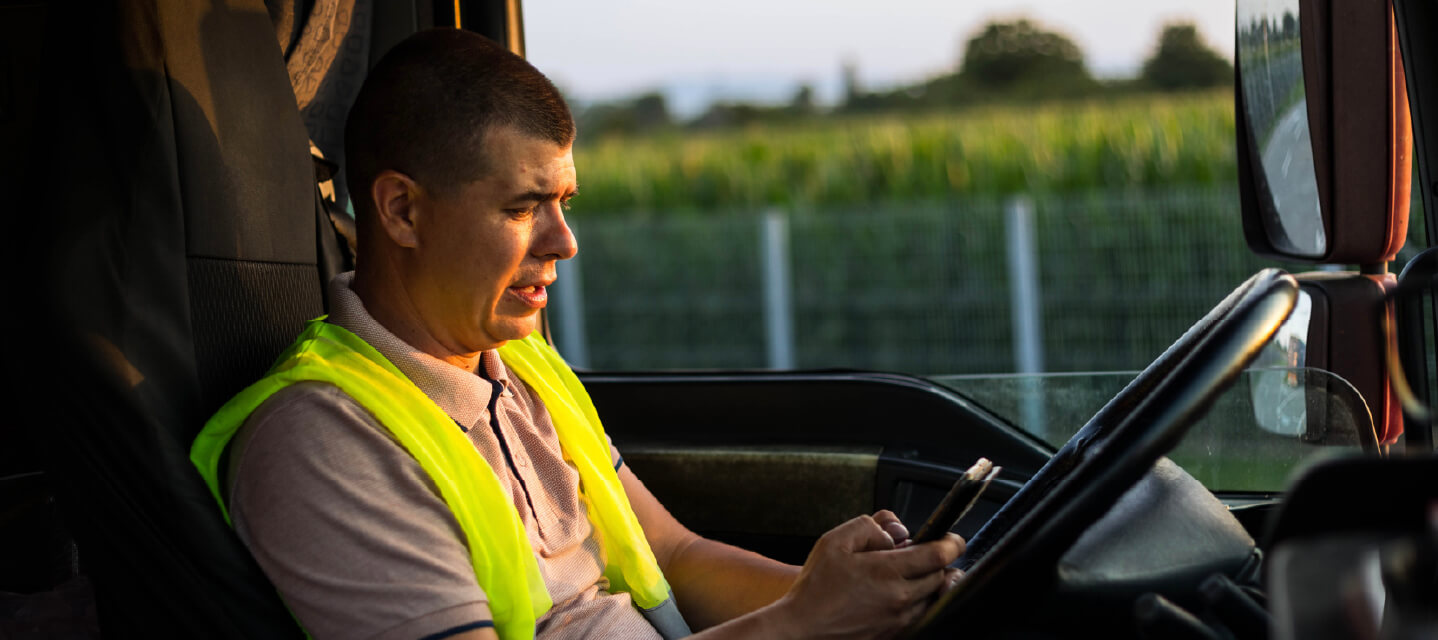7 essentials for your truck emergency kit
You never know when you might find yourself in an emergency situation while on the road. Get tips on what to include in your survival kit.
By Geotab Team
Dec 29, 2020
Updated: Nov 17, 2021

No matter how many precautions you take to maximize fleet uptime (for example, by implementing a predictive maintenance system), freak weather events, unexpected vehicle component failure or human error can result in a vehicle breakdown. Every truck should have a well-equipped truck emergency kit containing a wide range of supplies to make sure drivers have the best chance of staying safe, warm and hydrated, even in remote regions.
Emergency situations can include:
- Floods
- Hurricanes
- Falling objects
- Wildfires or blizzards
- Collisions
- Extreme traffic delay
- Tunnel or bridge failure
- Tornadoes
It is impossible to predict the exact type of emergency your drivers might face, so it is best to prepare for a variety of situations. The more items you can fit into your truck emergency kit, the better, but here are ten essentials to get you started:
1. Food and water
The amount of food and water you should pack depends on how far your driver will be from home. Long-haul truck drivers, or those travelling across remote locations, should pack at least a few days’ worth of non-perishable food and several gallons of water stored in bottles that will not burst if frozen.
Long-haul drivers can also consider meal preparation products and mess kits. Those driving shorter distances, such as slip seat or day cab drivers, can pack less, but high-calorie, long-lasting options like packaged protein bars, nuts and dried fruit are highly recommended in all kits.
Water bottles should also be changed every six months at least.
2. First aid kit and extra PPE
A first aid kit containing medical supplies and a first aid manual is essential in case of injury. You should also consider stocking up on pain relievers, bandages and wet wipes, plus a sufficient supply of up-to-date prescription medication, especially on long-haul journeys when it might be difficult to refill. Be sure to keep all medical emergency contact forms up-to-date and on-hand, and make sure someone else has this information, too.
It is also a good idea to store extra PPE such as masks, gloves and eye protection, as well as hard-surface disinfectants and hand sanitizer. For more ideas on the types of supplies transportation workers should stock up on to stay safe during the pandemic, check out this article.
3. Warm clothing and eyewear
If your vehicle breaks down in the winter it can be dangerous to sit in the cold with no heating. Make sure your kit contains thermal blankets and extra layers of warm clothing, including warm socks, a winter hat and waterproof gloves, plus laundry supplies if on a long-haul journey. Consider purchasing a sub-zero sleeping bag and pillow in case you are unable to find a warm place to sleep.
If you wear prescription glasses or contact lenses, keep spare pairs in your emergency kit in case they get damaged and it is dangerous or illegal for you to drive without vision correction. Extra sunglasses are also recommended for glare.
4. Basic tool kit
Keep a basic tool kit on hand containing items such as:
- Pliers
- Screwdrivers
- Box knife and/or Swiss army knife
- Wrenches
- Duct tape
- Spare bulbs for headlights and marker lights
- Extra fuses
- Jumper cables
- Tow strap
5. Flashlight and strobe lights
Keep a flashlight on-hand plus a sufficient supply of batteries. Check regularly to make sure the batteries have not expired. You can also consider a wind-up flashlight, emergency flares (usually required by national regulations), candles and matches.
You should also have an emergency supply of LED strobe warning lights.
6. Windshield de-icer and scraper
Ice and snow can collect on your windshield and obstruct your visibility. It can also fall off while driving and hit another car, potentially causing a collision. Always keep a windshield de-icer and a scraper in your kit, plus a shovel, if you might encounter bad winter weather.
For more ways to improve vehicle safety in the winter, take a look at our blog post: 7 ways to winterize your vehicle.
7. Portable cell phone charger
Always make sure your cell phone is charged before setting off on a journey, and if you will be gone for longer than a few hours consider investing in a portable cell phone charger. Also keep a paper list of contacts in your kit in case your phone loses power or is damaged and you need to reach someone.
See also: Distracted driving facts and solutions
Conclusion
These are just a few examples of the many items you can include in your truck emergency kit. Some regulators, like FMCSA, also require every truck to be outfitted with certain emergency supplies, so be sure to check your regional legislation.
Safe driving!
Subscribe to get industry tips and insights
The Geotab Team write about company news.
Table of Contents
Subscribe to get industry tips and insights
Related posts

9 strategies to increase fleet fuel efficiency and lower fuel costs
July 8, 2025
4 minute read

Creating a fleet safety culture that’s built to last: Lessons from Missouri DOT and NYC
July 7, 2025
8 minute read

The fleet safety incentive program checklist for driver engagement that lasts
June 19, 2025
2 minute read

Building a self-sustaining school bus driver safety program with Geotab Vitality
June 13, 2025
7 minute read

55+ Surprising distracted driving statistics and facts for 2025
May 30, 2025
8 minute read
